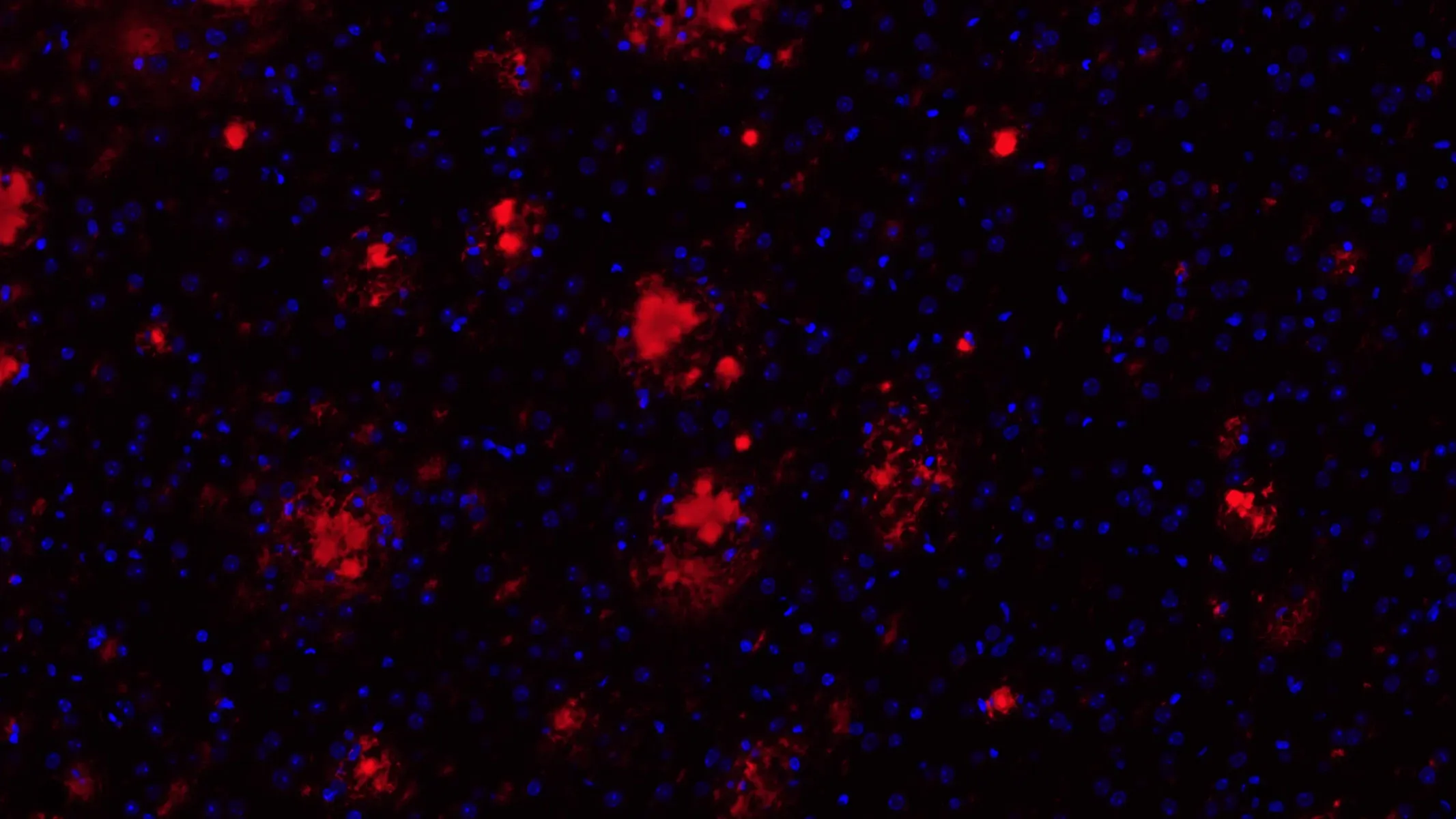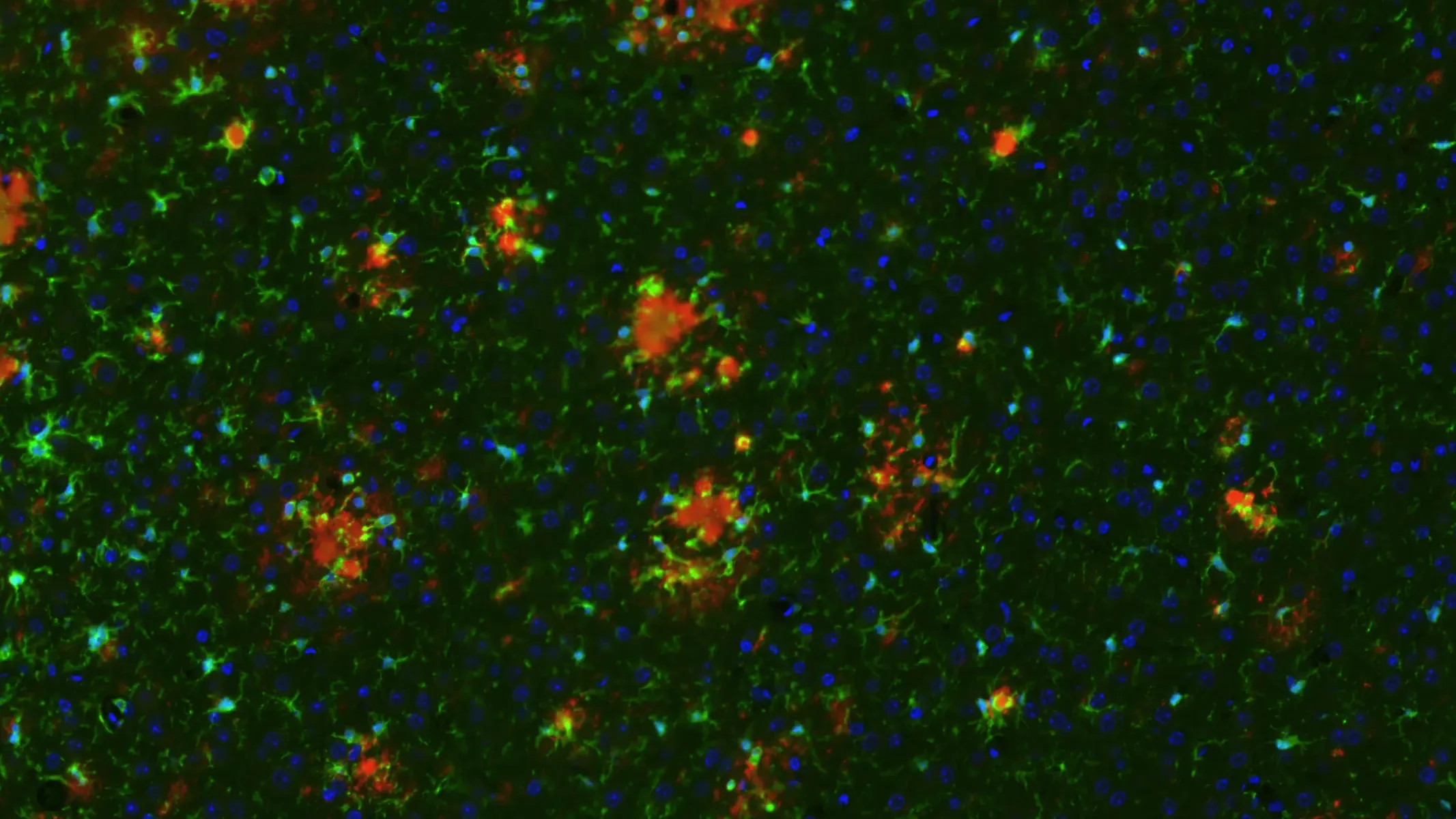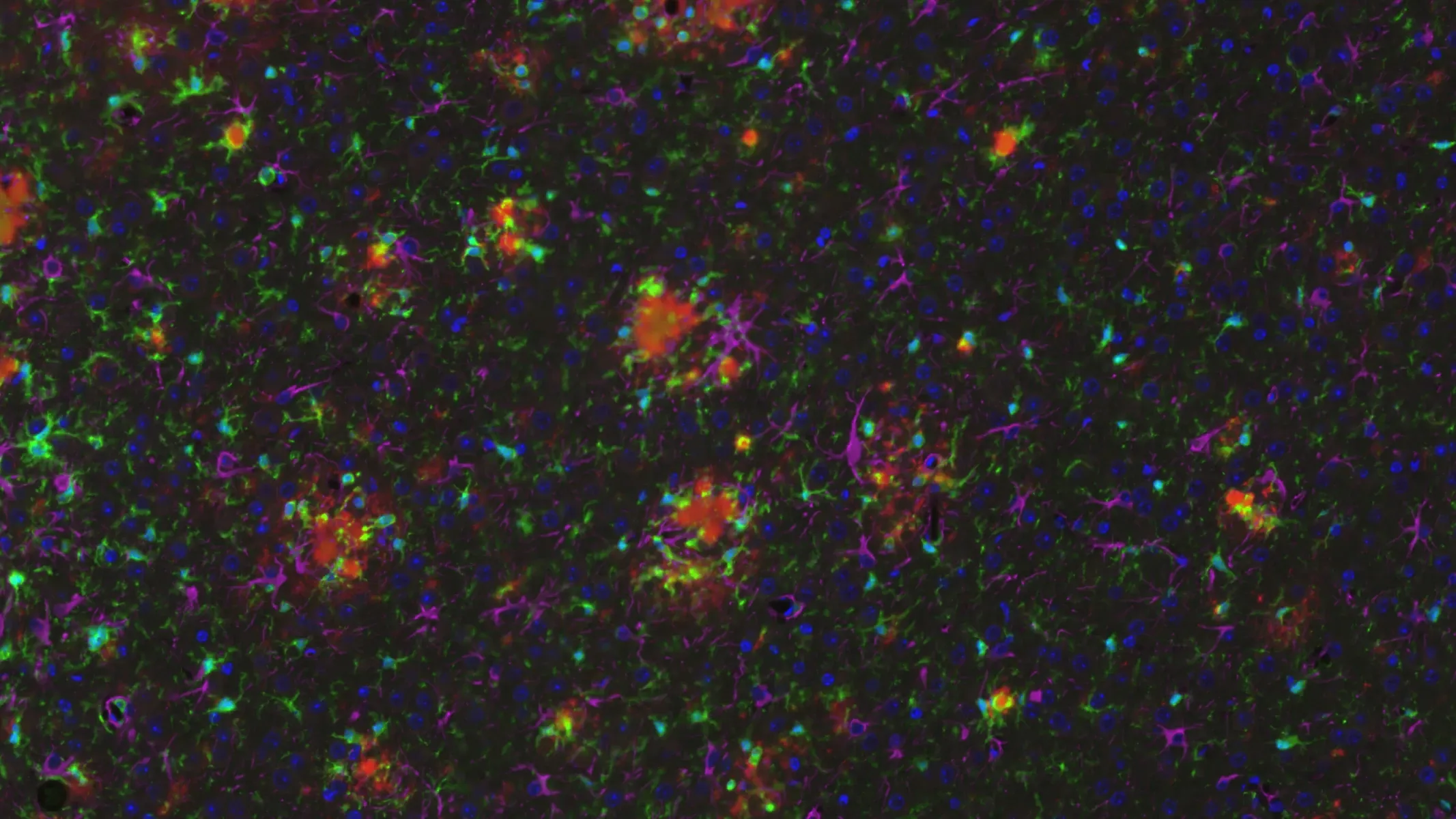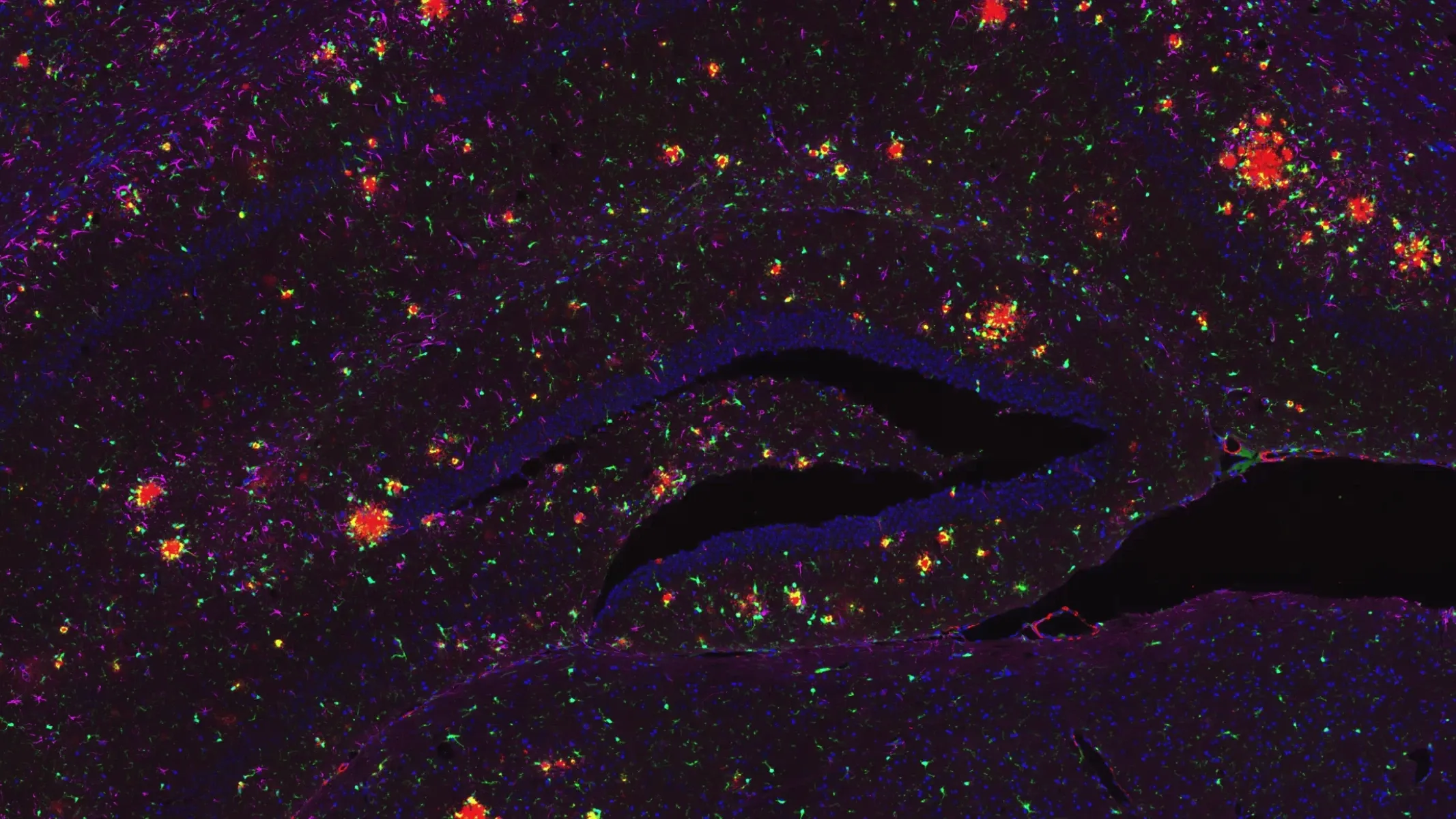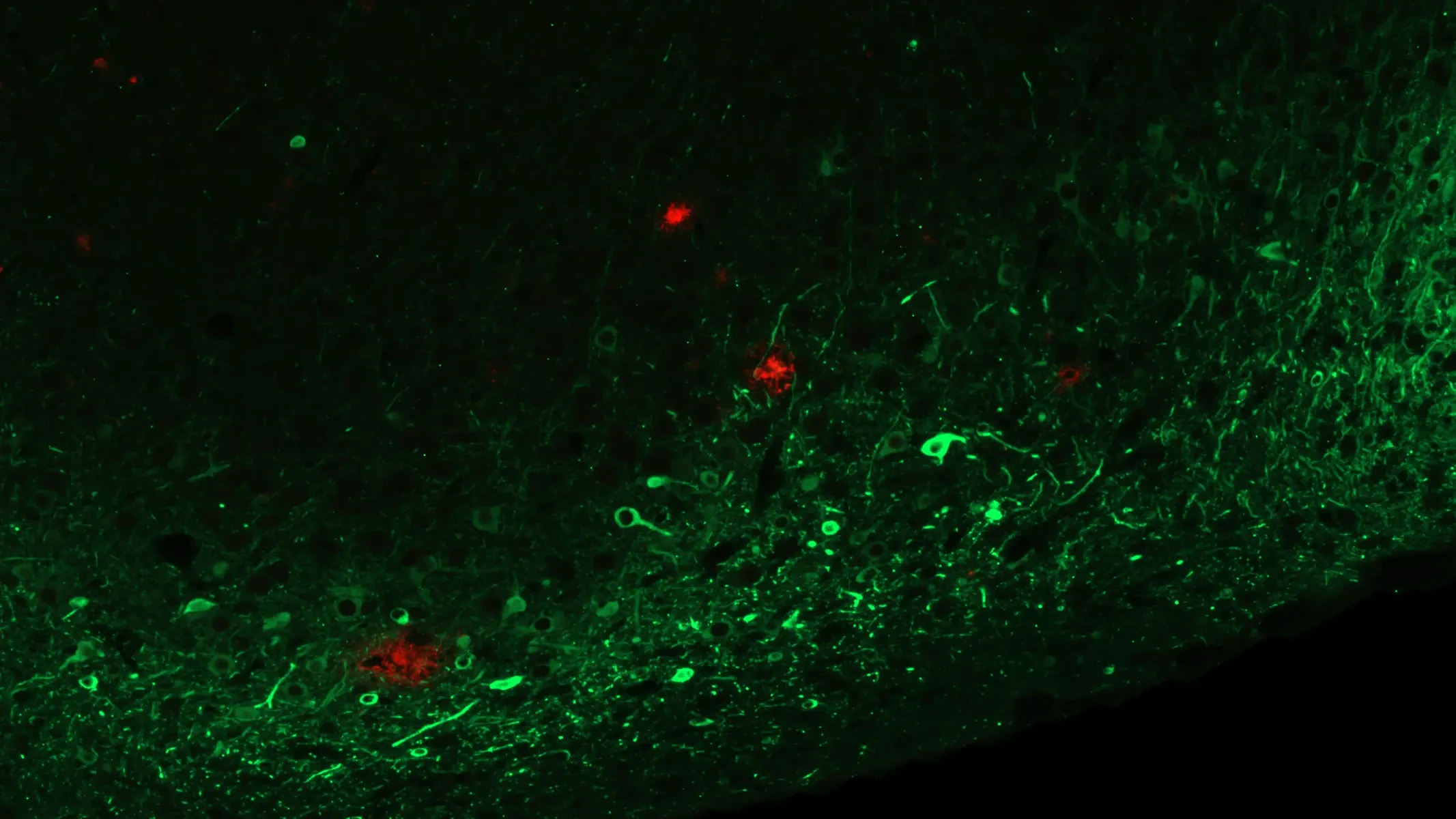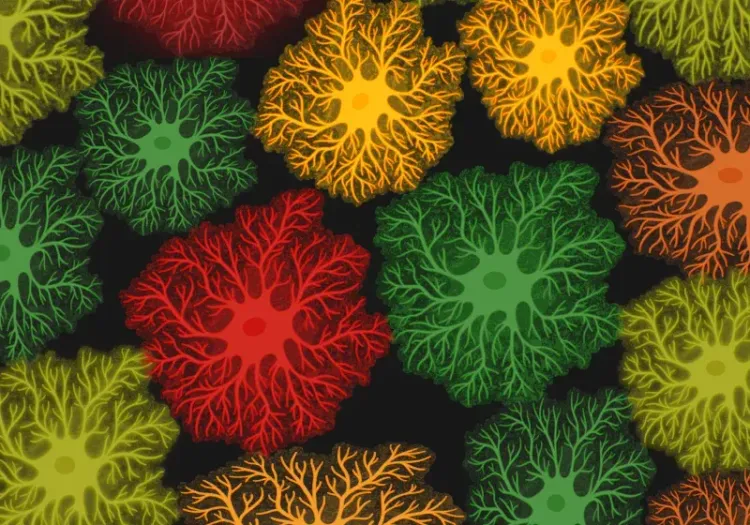アミロイド-βおよびタウ共病理マウスモデル(APP/PS1/hTau) の概要
このアルツハイマー病モデルでは、 二重トランスジェニックAPP/PS1マウスの中枢神経系に、 AAV-hTau(野生型2N4Rヒトタウ)を過剰発現するAAVを複数回 、 両側ステレオタクティックに接種します 。
このマウスモデルは、ヒトのアルツハイマー病の主要な特徴を再現しています。具体的には:
- アミロイドβ斑
- 細胞体と神経突起に蓄積したリン酸化タウの凝集体
- 活性化ミクログリア
- 反応性アストロサイト
- 睡眠障害
- 生体MRI検査で測定された局所的な脳萎縮(体積および皮質厚)
アミロイド-β およびタウ共病理マウスモデル(APP/PS1/hTau)の生成
モデル生成の一般的な概要は次のとおりです:
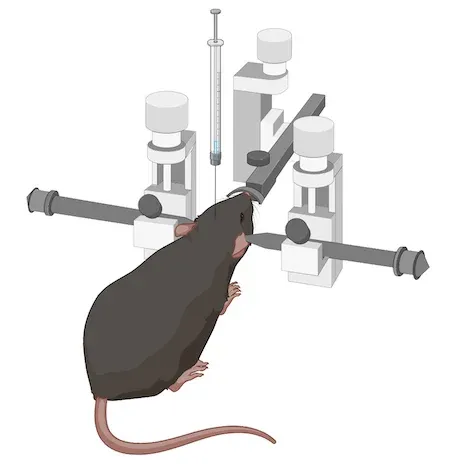
この特定のモデルでは、通常、生後約6か月のAPP/PS1マウスを使用します(ただし、より若いまたはより年老いたマウスを使用することも可能です)。その後、疾患に関連する複数の脳領域にAAVベクターのステレオタクティック注射を行います。高精度と高精度を実現するため、自動マイクロインジェクターを備えたデジタルステレオタクティックデバイスを使用します。
研究のin vivoフェーズは 通常4~12週間続きます。生体内の評価指標(MRIによる脳萎縮など)は、4週間目から有意な効果を示します。そのため、評価指標の生成は比較的短期間で提供可能です。特に、従来のアルツハイマー病およびタウ病変のタウ転移モデルと比較して、その利点が顕著です。
モデル特性評価
以下のインタラクティブプレゼンテーションでは、当社のアミロイド-βとヒトタウの共病態(APP/PS1/hTau)マウスモデルの特徴を、in vivoデータやマルチプレックス免疫蛍光組織切片の高解像度画像を含めてご確認いただけます。
左側のパネルを使用して、この「イメージストーリー」を簡単に閲覧できます。
左クリックで高解像度顕微鏡画像の周囲を移動できます。マウス/トラックパッド(上下)または画面左上隅の「+」と「-」ボタンでズームイン/ズームアウト が可能です。画面右上隅のコントロールパネルで 、チャンネルとセグメンテーションの表示/非表示、色変更、画像設定の調整を行うことができます。
最高のインタラクティブ体験 のためには、フルスクリーンモード の使用をお勧めいたします。
APP/PS1/hTau モデルに関する当社の特性評価、検証済みの測定方法、および前臨床神経科学 CRO サービスについて詳しくご説明いたします。
アルツハイマー病およびタウオパチーのモデルについてさらに詳しく
関連コンテンツ
アルツハイマー病およびタウ病に関する最新情報、ならびに動物モデルにおける治療薬の評価におけるトランスレーショナルバイオマーカーの使用に関するベストプラクティス。
アルツハイマー病におけるアストロサイトの形態
アストロサイトの形態解析の概要と、神経変性疾患の研究および創薬・薬剤開発への応用。
